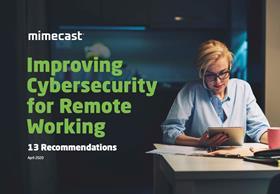Improving Cybersecurity for Remote Working: 13 Recommendations

What are the security implications of this abrupt change? And which cybersecurity best practices are most critical to make this abrupt change both seamless and secure?

The dependence on emergency remote working will forever be part of most organizations’ cyber resilience strategy – part of the IT and security new normal. If your organization can effectively work from home (WFH), you should feel very fortunate, as many industries largely cannot – such asairlines, hotels, cruise lines, and manufacturing firms – to name a few.
The bottom line is that your IT and security systems should be an enabler of remote working and not an inhibitor.
To make working from home more seamless and more secure this eBook provides 13 key recom- mendations, some of which can be implemented in short order, while others require an evolution of both IT and security strategies and new investments to make happen. These recommendations were drawn from Mimecast’s own experiences as a global cybersecurity company, insights from industry analysts, and perspectives drawn from members of the Cyber Resilience Think Tank.
You will see that a number of these recommendations revolve around leveraging the cloud for everything, both for IT and security. One clear takeaway is that without the cloud and its inherent scalability, accessibility, geographic diversity, and resilience, we would be lost. Imagine experiencing this work from home rush 10 years ago!
This is premium content
If you are already a registered user or subscriber you can SIGN IN now
Register today for free!
Want to read more before deciding on a subscription? It only takes a minute to sign up for a free account and you’ll get to enjoy:
- More free content each month
- Full access to our news archive
- Daily news alerts and updates
- Bookmarks and commenting
Get more free content sign up today
Ready to subscribe? Choose from one of our subscription packages for unlimited access!





